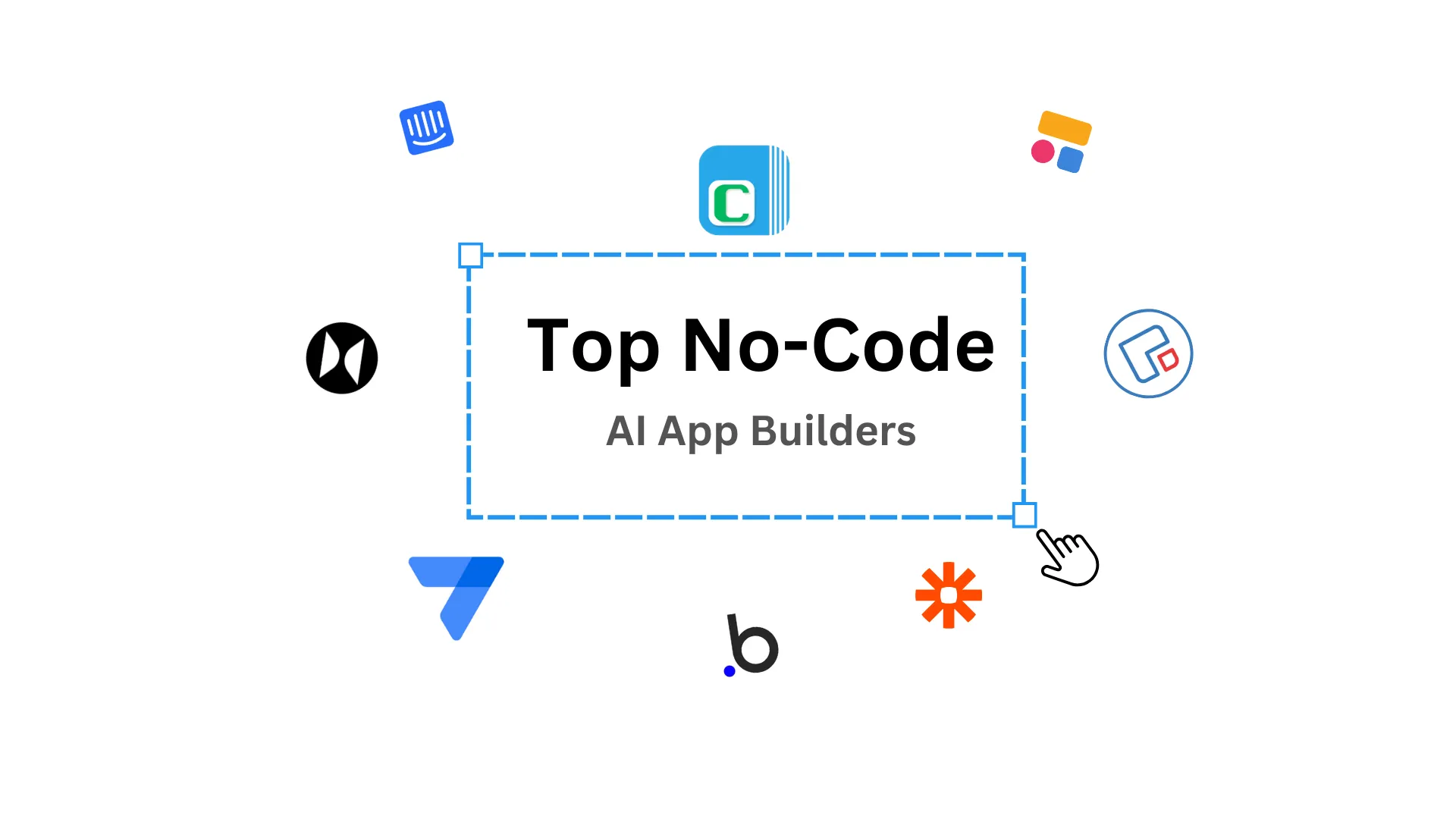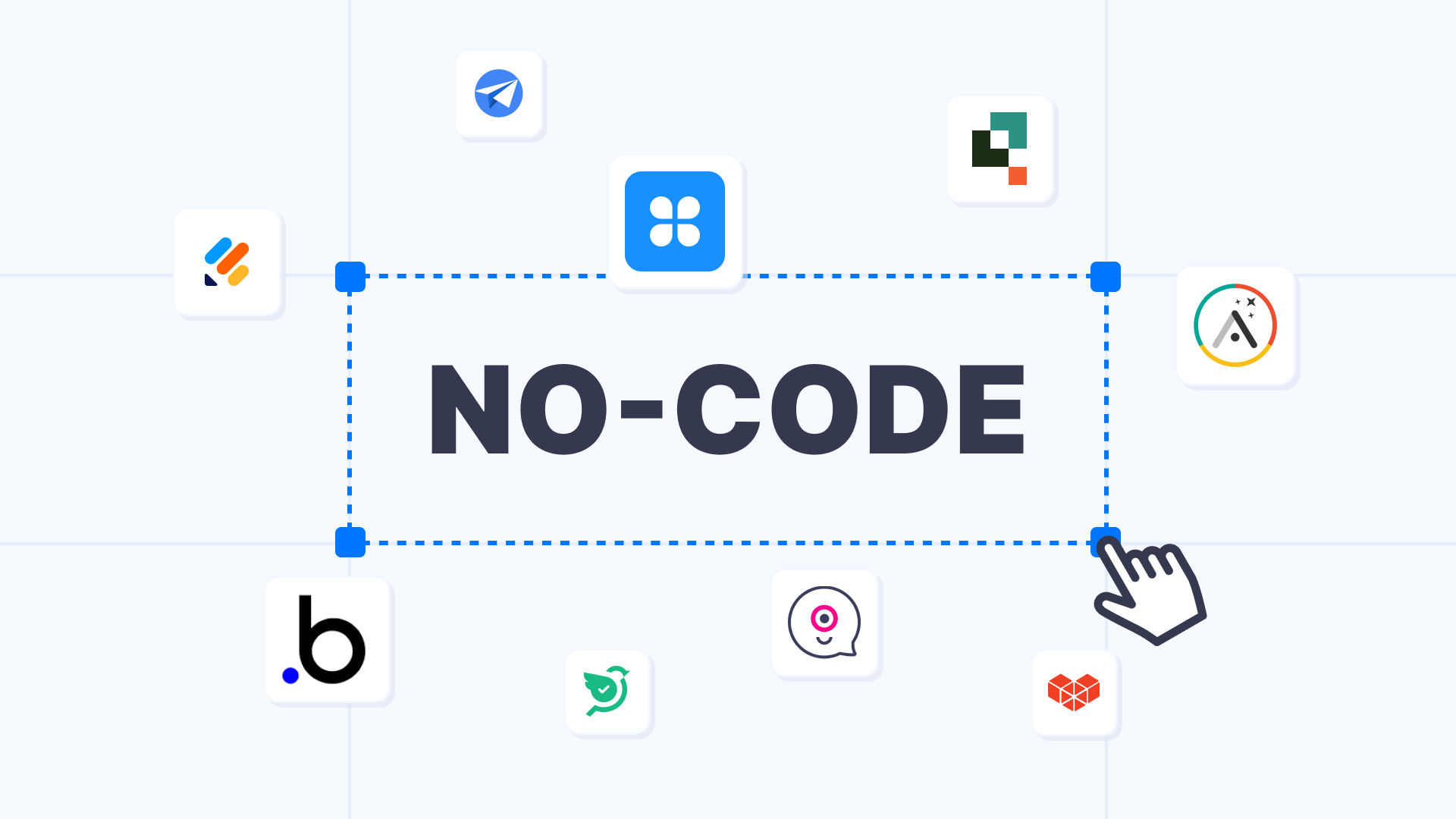The Ultimate Guide to No-Code Automation
Remember when automating a simple task meant weeks of coding, bug fixes, and expensive developer hours? Those days are behind us. No-code automation has transformed how businesses and individuals handle repetitive tasks, turning what once required technical expertise into drag-and-drop simplicity.
I’ve spent the last five years helping businesses implement automation solutions, and I’ve watched no-code tools evolve from basic connectors to sophisticated workflow engines. What started as simple “if this, then that” logic has grown into platforms capable of handling complex business processes that would have cost thousands to develop traditionally.
No-code automation refers to tools and platforms that allow users to create automated workflows without writing code. Instead of programming languages, these platforms use visual interfaces—think flowcharts, forms, and dropdown menus—to connect different applications and automate tasks between them.
The concept isn’t entirely new. The roots trace back to the early 2000s with simple RSS feeds and email filters. But the real breakthrough came around 2011 when Zapier launched, followed by a wave of competitors that recognized a fundamental truth: most business automation doesn’t require custom code—it requires smart connections between existing tools.
The benefits extend far beyond convenience. Businesses report saving 10-40 hours per week on manual tasks after implementing no-code automation. More importantly, these tools democratize automation, putting powerful workflow capabilities in the hands of marketing managers, HR professionals, and small business owners who previously couldn’t access such functionality.

Why No-Code Automation Matters
Time Savings That Actually Matter
The most obvious benefit is time recovery, but the impact runs deeper than you might expect. When I worked with a small marketing agency, they were manually copying leads from Facebook ads to their CRM, then sending welcome emails individually. This took about 2 hours daily. After setting up a simple automation, they redirected those 10 weekly hours to client strategy work, directly increasing revenue.
Consider the compound effect: automating one 15-minute daily task saves 65 hours annually. Multiply that across multiple processes, and you’re looking at weeks of recovered time. The real value isn’t just efficiency—it’s the cognitive load reduction. When routine tasks handle themselves, teams can focus on creative problem-solving and strategic thinking.
Cost Reduction Beyond the Obvious
The financial impact extends beyond saved labor costs. Custom development for basic automation workflows typically costs $5,000-$15,000, plus ongoing maintenance. No-code platforms deliver similar functionality for $20-$100 monthly. But the hidden savings are substantial: reduced human error, faster implementation, and the ability to iterate quickly without additional development costs.
I’ve seen companies avoid hiring additional staff by implementing smart automation. A real estate company I consulted with was considering hiring a full-time coordinator to manage client communications. Instead, they built automated follow-up sequences that handled 80% of routine client interactions, saving $45,000 annually while improving response times.
Accessibility for Non-Developers
This democratization aspect cannot be overstated. Previously, business process automation required either technical skills or IT department involvement. No-code tools put automation directly in the hands of domain experts—the people who understand the processes best.
Marketing managers can now build lead nurturing sequences, HR teams can automate onboarding workflows, and operations staff can sync inventory across platforms. This removes the communication barrier between business needs and technical implementation, resulting in more accurate, useful automations.
Real-World Business Impacts
These aren’t just efficiency gains—they translate to competitive advantages. Faster response times improve customer satisfaction. Reduced errors enhance professional credibility. Consistent processes scale better than manual workflows.
Top No-Code Automation Platforms
While many platforms exist, the most common decision businesses face is choosing between the two market leaders. For an in-depth analysis, read our complete Zapier vs Make comparison to see which is right for you.
Zapier Overview
Zapier remains the most recognizable name in no-code automation, and for good reason. With over 5,000 app integrations, it’s likely to connect whatever tools you’re already using. The platform’s strength lies in its simplicity and extensive documentation.
Key Features:
- Intuitive trigger-action setup
- Extensive app library
- Built-in data formatting tools
- Collaborative workflow sharing
- Comprehensive error handling
Pros:
- Beginner-friendly interface
- Excellent customer support
- Reliable uptime and execution
- Strong community and resources
- Pre-built templates for common use cases
Cons:
- Limited advanced logic capabilities
- Can become expensive with high task volumes
- Some integrations lack full feature access
- Multi-step workflows can be complex to troubleshoot
Zapier excels for straightforward automations and businesses that prioritize ease of use over advanced functionality. It’s particularly strong for marketing automation, CRM management, and basic data synchronization.
Make (Integromat)
Make, formerly Integromat, takes a more visual approach to automation building. Instead of linear trigger-action sequences, Make uses flowchart-style “scenarios” that can handle complex branching logic and multiple data sources.
Use Cases Where Make Shines:
- Complex data transformations
- Multi-conditional workflows
- Integration with custom APIs
- Advanced error handling and retry logic
- Scenarios requiring multiple triggers
Flexibility Advantages:
Make’s visual editor allows for sophisticated logic that would be difficult to implement in more linear platforms. You can create scenarios that process data from multiple sources, apply different actions based on various conditions, and handle exceptions gracefully.
The platform particularly excels in e-commerce automation, where workflows often need to handle inventory updates, customer segments, and multiple sales channels simultaneously.
Airtable
While primarily known as a database tool, Airtable’s automation capabilities make it a unique entry in this space. It’s ideal when your automation needs center around data organization and you want both the database and automation in one platform.
When to Use Airtable for Automation:
- Project management workflows
- Content production tracking
- Customer relationship management
- Inventory and asset tracking
- Team collaboration processes
Airtable’s automation works best when your workflow revolves around structured data that benefits from database organization. The platform’s strength is combining data storage with automated actions based on record changes.
Other Notable Platforms
Pabbly Connect offers unlimited automation for a flat monthly fee, making it cost-effective for high-volume users. It’s particularly strong for businesses that need many simple automations rather than complex workflows.
Integrately focuses on pre-built automation templates, making it extremely beginner-friendly. If you’re looking for proven workflows rather than custom building, Integrately’s template library is impressive.
Bardeen specializes in browser-based automation, perfect for workflows that involve web scraping, social media management, or tasks that happen within web applications.
N8N is the open-source option, offering self-hosted automation for businesses that need complete control over their data and processes.
10 Real-World Use Cases
Automating Lead Capture
Modern lead capture goes far beyond simple form submissions. Effective automation captures leads from multiple sources—social media, webinars, content downloads—and immediately routes them to the appropriate follow-up sequence.
The Process: When someone downloads a lead magnet, the automation immediately adds them to your CRM with appropriate tags, sends a welcome email series, notifies the sales team for high-value prospects, and creates a follow-up task for one week later.
Business Impact: Companies implementing comprehensive lead capture automation see 35% higher conversion rates because leads receive immediate, relevant follow-up instead of sitting in a queue.
Customer Onboarding
Customer onboarding automation transforms a typically manual, inconsistent process into a smooth, professional experience. The automation triggers when someone becomes a customer, initiating a sequence of welcome emails, resource delivery, and check-in communications.
Advanced Implementation: Smart onboarding automation adapts based on customer behavior. If someone doesn’t engage with initial resources, they receive different content. If they show high engagement, they’re fast-tracked to advanced features or upgrade offers.
Inventory Sync
For businesses selling across multiple channels, inventory synchronization prevents overselling and maintains accurate stock levels. When inventory changes in your main system, automation immediately updates all sales channels.
Beyond Basic Sync: Advanced inventory automation can trigger reorder alerts when stock runs low, automatically adjust pricing based on inventory levels, and even pause marketing campaigns for out-of-stock items.
Data Backups
Automated data backups ensure critical business information is regularly saved across multiple platforms. This goes beyond simple file copying to include database exports, CRM backups, and cloud storage synchronization.
Smart Backup Strategies: Modern backup automation can prioritize different data types, compress files for storage efficiency, and even test backup integrity automatically.
Social Media Scheduling
Social media automation handles content distribution across multiple platforms, but sophisticated implementations go further. They can adjust posting times based on engagement analytics, repurpose content for different platforms, and even generate engagement reports.
Email Marketing Sequences
Beyond basic autoresponders, advanced email automation creates dynamic sequences based on subscriber behavior, purchase history, and engagement patterns. This creates personalized customer journeys that feel human while running automatically.
Invoice and Payment Processing
Financial automation handles invoice generation, payment reminders, and revenue tracking. When integrated with project management tools, it can automatically generate invoices when projects are completed and send payment reminders based on terms.
Customer Support Ticket Routing
Support automation ensures customer inquiries reach the right team member based on issue type, customer tier, or urgency level. This reduces response times and improves customer satisfaction.
Content Creation Workflows
Content automation can manage the entire creation process, from idea capture to publication. It can assign tasks to writers, track deadlines, and even automatically publish approved content.
Sales Pipeline Management
Sales automation keeps opportunities moving through your pipeline by creating tasks, sending follow-up reminders, and updating deal stages based on customer actions.
Setting Up Your First Workflow
Step 1: Choose the Right Tool
Your first automation should be simple and high-impact. Start with a task you perform regularly that involves moving data between two applications. Common starter automations include:
- New email subscribers → Add to CRM
- New CRM contact → Add to email marketing list
- Form submission → Create project in project management tool
- New customer → Send welcome email sequence
Choose a platform based on the applications you need to connect. If both apps are in Zapier’s directory, start there. If you need more complex logic, consider Make.
Step 2: Define Your Trigger
The trigger is the event that starts your automation. Good triggers are:
- Specific: “New contact added to CRM” rather than “CRM updated”
- Frequent enough: Triggers should fire regularly enough to provide value
- Reliable: The triggering app should consistently send data
Test your trigger thoroughly. Many automation failures stem from triggers that don’t fire consistently or send incomplete data.
Step 3: Create Your Action
Actions should be simple and focused. Complex actions are harder to troubleshoot and more likely to fail. If you need multiple actions, consider separate automations that can run independently.
Action Best Practices:
- Map data fields carefully
- Include error handling
- Set up notifications for failures
- Test with real data, not just test records
Step 4: Test Everything
Testing is crucial and often overlooked. Test your automation with various data scenarios:
- Normal, expected data
- Edge cases (empty fields, special characters)
- High volume (if applicable)
- Error conditions
Best Practices for Success
Start Small: Begin with simple, two-step automations before building complex workflows. Master the basics before attempting advanced features.
Document Everything: Keep notes on what each automation does, why it was created, and how it works. This helps with troubleshooting and team handoffs.
Monitor Performance: Regularly review automation success rates and execution times. Declining performance often indicates issues with connected applications or changed requirements.
Plan for Failure: Every automation will eventually fail. Build in error handling and notification systems so you know when something breaks.
Monitoring and Testing
Effective monitoring goes beyond success/failure notifications. Track:
- Execution frequency: Is the automation running as expected?
- Data quality: Are the right data fields being captured and transferred?
- Performance metrics: How is the automation impacting your business processes?
- Error patterns: Are certain types of data causing consistent failures?
Set up regular review schedules—monthly for critical automations, quarterly for less critical ones. During reviews, check that the automation still serves its intended purpose and hasn’t become obsolete due to process changes.
Advanced No-Code Automation Techniques
Conditional Logic
Simple if-then logic is just the beginning. Advanced conditional logic allows automations to make decisions based on multiple criteria, creating dynamic workflows that adapt to different situations.
Multi-Condition Scenarios: Instead of “if new contact, then send email,” consider “if new contact AND they’re in the enterprise segment AND they came from a webinar, then notify sales team and send premium welcome sequence.”
Nested Conditions: Advanced platforms allow nested conditional logic, where the result of one condition determines the next set of conditions to evaluate. This creates decision trees that can handle complex business rules.
Multi-Step Automations
Complex business processes often require multiple sequential actions. Multi-step automations can handle entire workflows, not just single actions. For a practical look at building these, check out our guide on creating advanced Zapier workflows, which dives deep into chaining multiple actions and handling complex logic.
Design Principles:
- Modularity: Break complex processes into smaller, manageable steps
- Error Isolation: If one step fails, others can continue or handle the error gracefully
- Data Persistence: Ensure data is properly passed between steps
- Branching Logic: Different paths based on data or conditions
Example Multi-Step Workflow:
- New lead captured from website form
- Data validation and enrichment
- Lead scoring based on company size, industry, and behavior
- Route to appropriate sales team based on score
- Add to nurture sequence or direct sales outreach
- Create CRM opportunity and initial tasks
- Send internal notification with lead summary
Error Handling
Professional automation requires robust error handling. Failures will happen—systems go down, data formats change, or rate limits are exceeded. Good error handling turns potential disasters into minor inconveniences.
Error Handling Strategies:
- Retry Logic: Automatically retry failed actions with exponential backoff
- Fallback Actions: Alternative actions when primary actions fail
- Data Validation: Check data quality before processing
- Notification Systems: Alert appropriate team members when errors occur
- Graceful Degradation: Continue processing what can be processed when partial failures occur
Webhooks and Custom Triggers
Webhooks enable real-time automation triggers that don’t depend on polling intervals. Instead of checking for new data every 15 minutes, webhooks trigger instantly when events occur.
When to Use Webhooks:
- Time-sensitive processes
- High-frequency events
- Custom applications
- Real-time data synchronization
Implementation Considerations:
- Webhook reliability varies by platform
- Some platforms have security requirements
- Error handling is crucial for webhook-triggered automations
- Testing webhooks requires careful setup
Custom Triggers: Advanced users can create custom triggers using API calls, scheduled functions, or even IoT devices. This extends automation beyond typical business applications to physical processes and custom workflows. For a deep dive into connecting different systems, explore our guide on cross-platform automation with webhooks.
Integrating AI with No-Code Tools
AI-Powered Data Processing
Modern no-code platforms increasingly integrate AI services for data processing, content generation, and decision-making. These integrations transform basic automation into intelligent workflows.
Content Generation: Integrate ChatGPT or similar AI models to generate personalized email content, social media posts, or product descriptions based on customer data. This creates dynamic, relevant content at scale.
Data Analysis: AI can analyze customer behavior patterns, predict outcomes, and make recommendations within your automation workflows. For example, AI can analyze past customer interactions to predict which leads are most likely to convert.
Image and Document Processing: AI-powered tools can extract text from images, categorize documents, and even generate images based on text descriptions. This enables automation of previously manual processes.
Smart Automation Examples
Dynamic Customer Segmentation: AI analyzes customer behavior, purchase history, and engagement patterns to automatically segment customers and trigger appropriate marketing campaigns.
Intelligent Lead Scoring: Machine learning models analyze lead data to predict conversion probability, automatically scoring leads and routing them to appropriate sales processes.
Content Optimization: AI analyzes content performance and automatically adjusts distribution strategies, posting times, and content formats based on engagement data.
Predictive Inventory Management: AI predicts demand patterns and automatically adjusts inventory levels, reorder points, and pricing strategies.
Implementation Strategies
Start with Pre-Built AI Integrations: Most major no-code platforms offer pre-built AI integrations that don’t require technical setup. These are ideal for getting started with AI-powered automation.
Use AI for Data Enhancement: AI excels at enriching existing data—adding context, categorizing information, or extracting insights from unstructured data.
Combine AI with Human Review: For critical processes, use AI to handle routine decisions while flagging edge cases for human review. This balances efficiency with accuracy.
Mistakes to Avoid
While building your workflows, it’s crucial to be aware of common pitfalls. We cover these issues in detail in our complete guide to no-code automation mistakes, but here are the most critical ones to watch for:
Looping Workflows
Automation loops occur when the output of one automation triggers another automation, which triggers the first one again. This creates infinite loops that can quickly exhaust your task limits or cause system overload.
Prevention Strategies: Use conditional logic to prevent re-triggering, implement “processed” flags in your data, and test thoroughly.
Exceeding Task Limits
Most no-code platforms have monthly task limits. Exceeding these limits can result in stopped automations or unexpected charges.
Cost Management: Monitor task usage regularly, optimize workflows to use fewer tasks, and consider platforms with higher limits for high-volume needs.
Inefficient Triggers
Poorly designed triggers waste resources. Common inefficiencies include triggers that fire too frequently or process unnecessary data.
Optimization Techniques: Use specific triggers rather than broad ones, implement filtering at the trigger level, and batch process when possible.
Data Quality Issues
Poor data quality leads to automation failures and incorrect results. Common problems include missing fields, inconsistent formats, or duplicate data.
Data Quality Practices: Implement data validation before processing, standardize formats, and perform regular data cleaning.
Over-Automation
Not every process should be automated. Over-automation can create rigid systems that can’t adapt to changing needs or handle exceptions.
When NOT to Automate: Processes that change frequently, tasks requiring human judgment, or activities where a human touch adds significant value.
Conclusion
No-code automation represents a fundamental shift in how businesses handle repetitive tasks and process management. What we’ve covered in this guide—from basic trigger-action workflows to AI-powered intelligent automation—is just the beginning of what’s possible.
The landscape continues evolving rapidly. New platforms emerge regularly, existing tools add sophisticated features, and integration possibilities expand. AI integration is becoming standard, not optional, and the line between simple automation and intelligent process management continues to blur.
The Future of No-Code Automation
Looking ahead, several trends will shape the next generation of no-code automation:
- Increased AI Integration: Every major platform is incorporating AI capabilities, from content generation to predictive analytics. This will enable automation that doesn’t just move data but makes intelligent decisions.
- Better Integration Depth: Current integrations often access only basic features of connected applications. Future integrations will provide deeper access to advanced features and custom fields.
- Industry-Specific Solutions: We’re seeing more specialized platforms designed for specific industries—healthcare, real estate, manufacturing—offering pre-built automations for common industry workflows.
- Improved Error Handling: As platforms mature, error handling and recovery mechanisms are becoming more sophisticated, reducing the maintenance burden on users.
- Mobile-First Automation: With increasing mobile business operations, automation platforms are developing better mobile interfaces and mobile-specific triggers and actions.
Resources to Stay Updated
The no-code automation space moves quickly. To stay current:
- Follow platform blogs and update announcements
- Join no-code communities and forums
- Attend virtual conferences and webinars
- Experiment with new features as they’re released
- Network with other automation practitioners
Getting Started Today
The best time to start with no-code automation is now. Begin with a simple, high-impact workflow—perhaps automating lead capture or customer onboarding. As you build confidence and see results, gradually expand to more complex processes.
Remember that automation is not about replacing human work entirely but about freeing humans to focus on higher-value activities. The goal is to eliminate repetitive tasks so teams can concentrate on strategy, creativity, and relationship building.
The tools and techniques covered in this guide provide a foundation for building sophisticated, reliable automation workflows. Whether you’re a small business owner looking to save time or an enterprise team seeking to scale operations, no-code automation offers accessible, powerful solutions.
Ready to Transform Your Workflows?
Explore our tool reviews and tutorials to start automating today. The efficiency gains, cost savings, and competitive advantages of well-implemented automation compound over time. Every day you delay is another day of manual work that could be automated.
Start small, think big, and build the automated workflows that will transform how your business operates.







